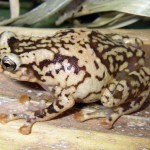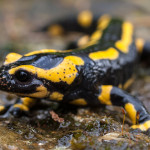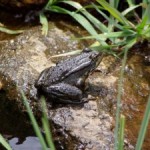Yesterday, in class with the Cloud Institute and Sustainable Jersey (NJ Learns), each student got to briefly share their project, so I was describing the Frogs Are Green mission and projects on the agenda for 2015.
My teacher Jaimie P. Cloud, challenged me with this question. “Much of what Frogs Are Green is about is bringing awareness to the public, but is there a change I want in the public’s behavior?”
It made me think about one specific area that we can focus on which would help frogs and amphibians as well as other wildlife and humans, and that is water quality.
We know that there are many issues, such as, pollution and oil spills, pesticides and other toxins, pharmaceuticals, and these aren’t just affecting wildlife, but us as well. It’s humans that are creating many of these problems, so it’s obvious that we must be the ones to correct it.
I did a search on Google for Frogs and Water Quality and was surprised to learn there is currently no standard for water quality as it applies to frogs and amphibians:
“The factors thought to be contributing to declines in frog populations include habitat loss, introduction of exotic species, overexploitation, disease, climate change, and decreasing water quality. With respect to water quality, agroecosystems use 80-90% of the water resources in the western United States, frequently resulting in highly eutrophic conditions. Recent investigations suggest that these eutrophic conditions (elevated pH, water temperature, and un-ionized ammonia) may be associated with frog embryo mortality or malformations. However, water quality criteria for frogs and other amphibians do not currently exist. Here, we briefly review data that support the need to develop water quality parameters for frogs in agroecosystems and other habitats.”
(from this website: PMC1519110/http://www.ncbi.nlm.nih.gov/pmc/articles/PMC1519110/)
What this tells me is that currently the water quality is tested to make sure it’s safe for humans, but there are no regulations in place for it to be safe for wildlife? Doesn’t it matter that it’s healthy for all life?
I’ll be reading much more on this issue and would like to invite you to share your thoughts or links to additional documentation you may have found.
Here’s a video I’d like to share because it shows just how important it is to educate the young with hands-on education from Marie Hartford, Science, 5th Grade Teacher and her students in Redmond, WA on the Teaching Channel about “Measuring the pH as it Relates to Water Quality.”





